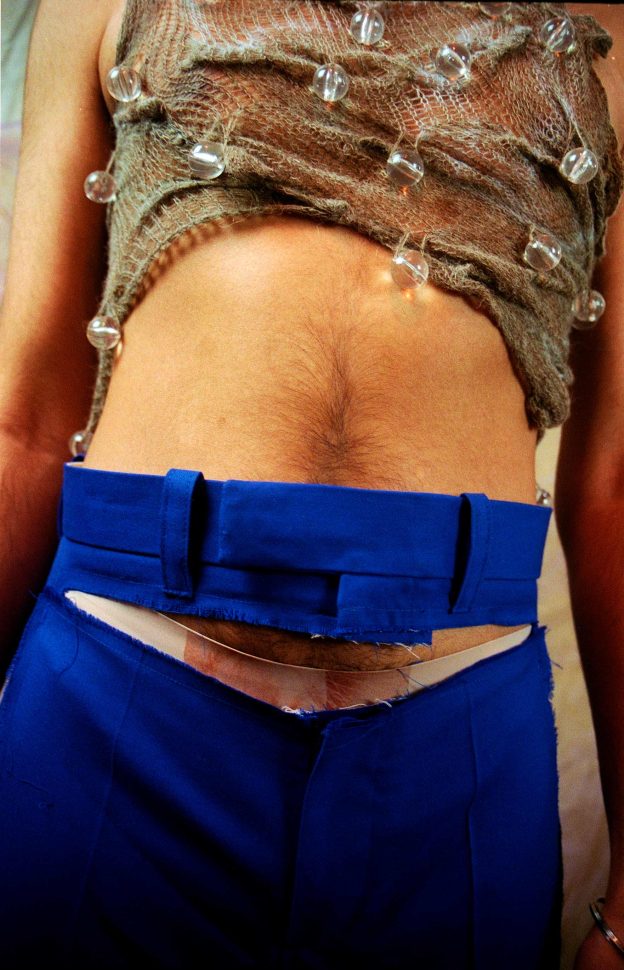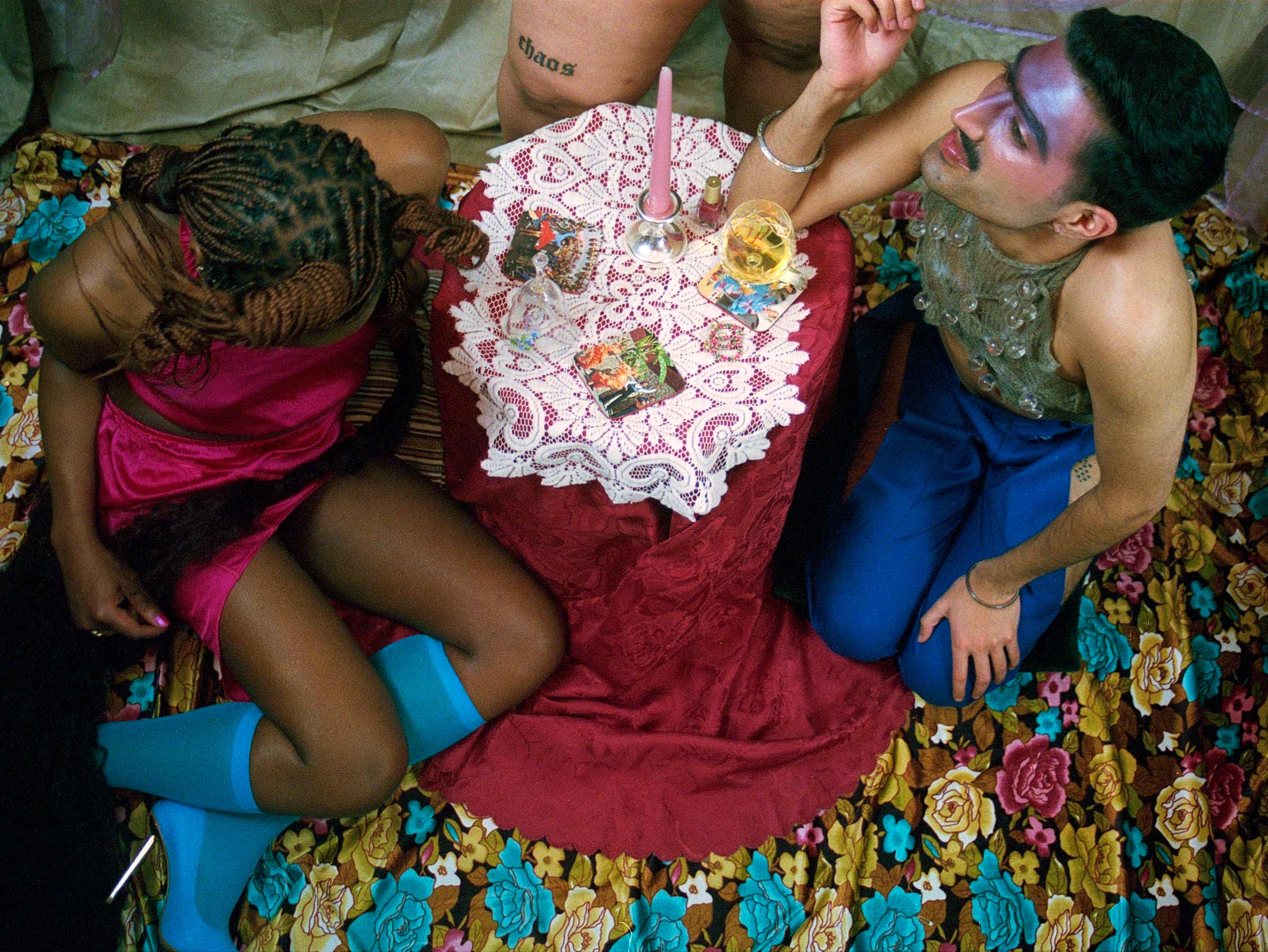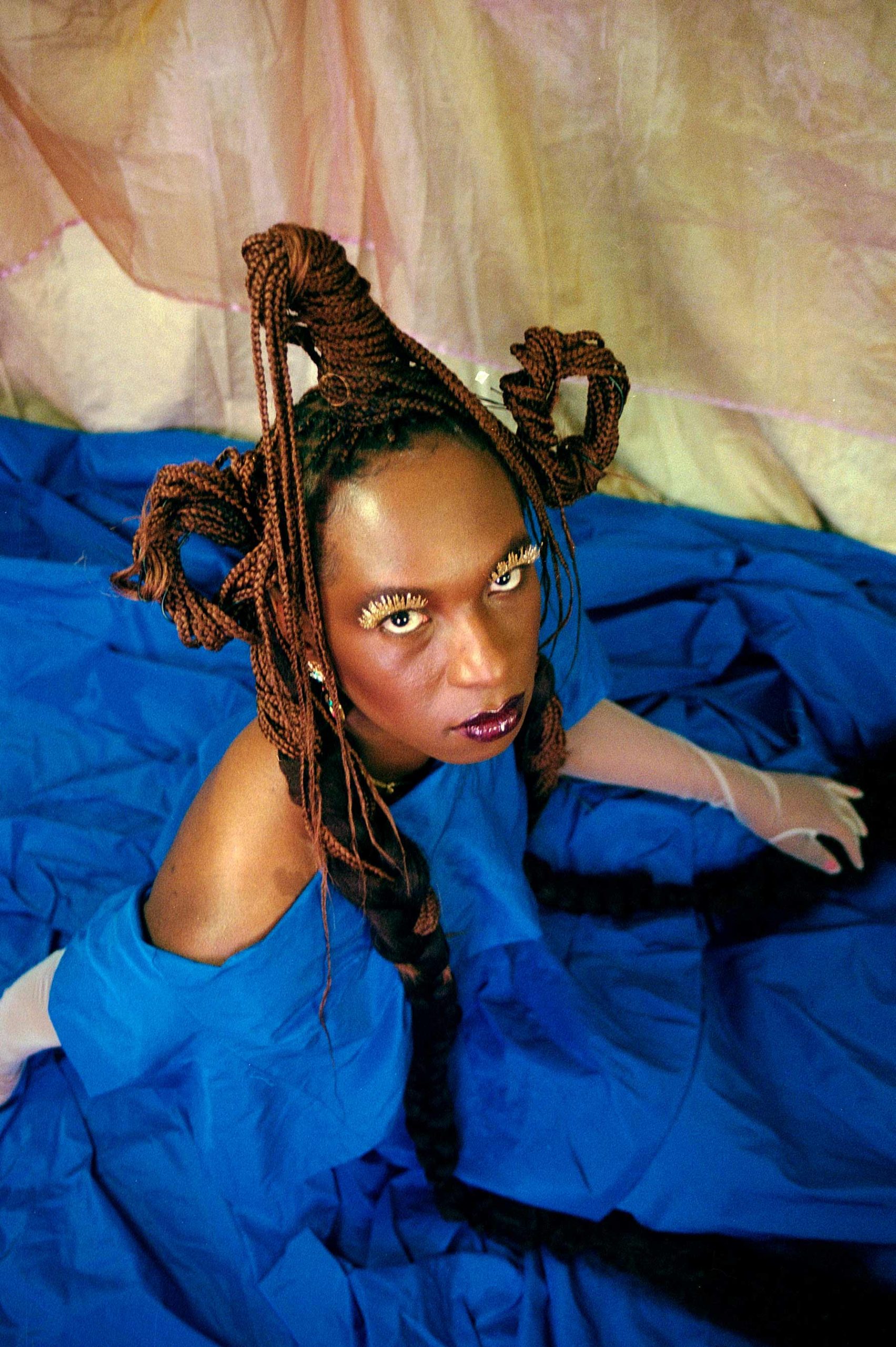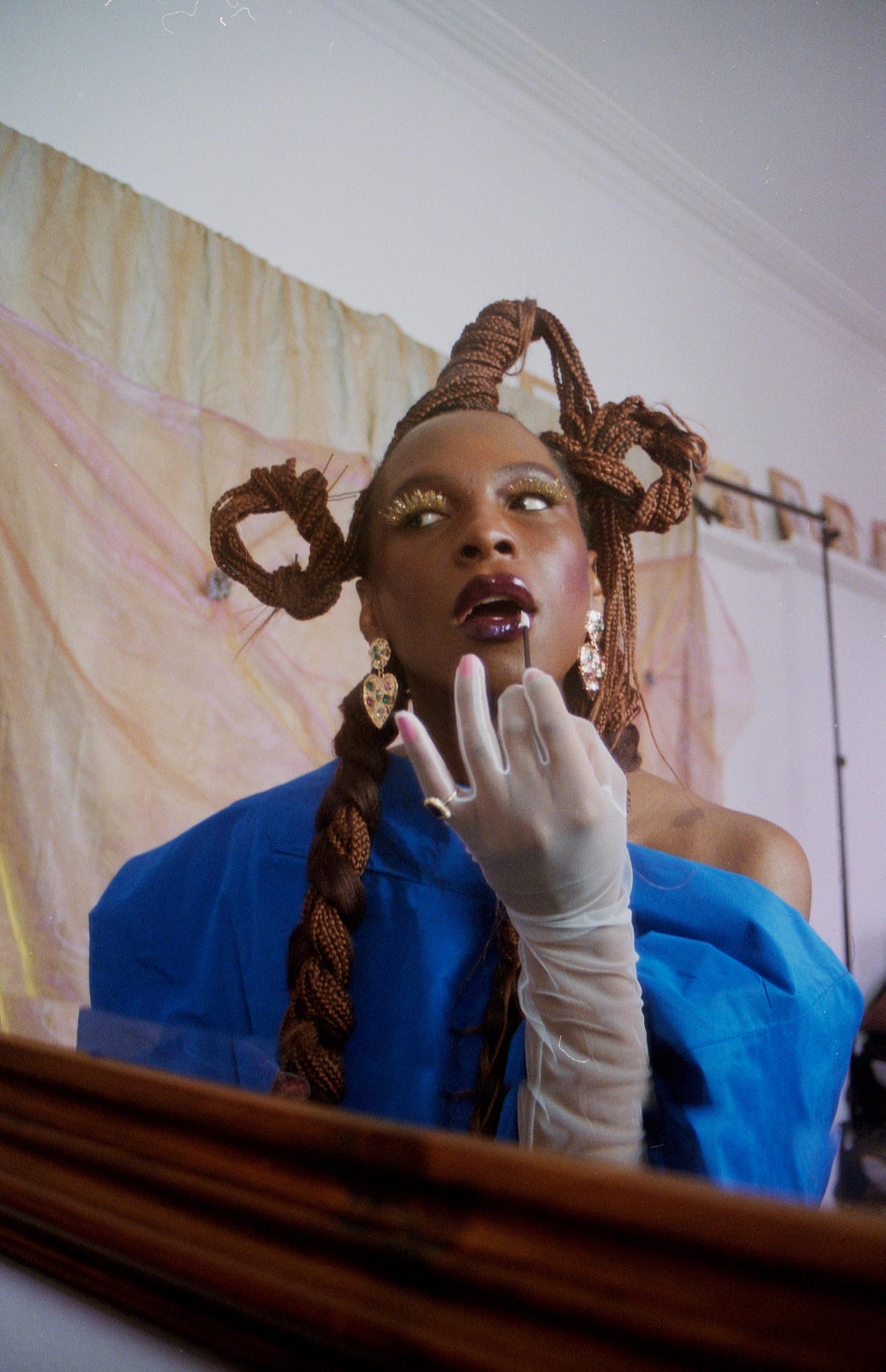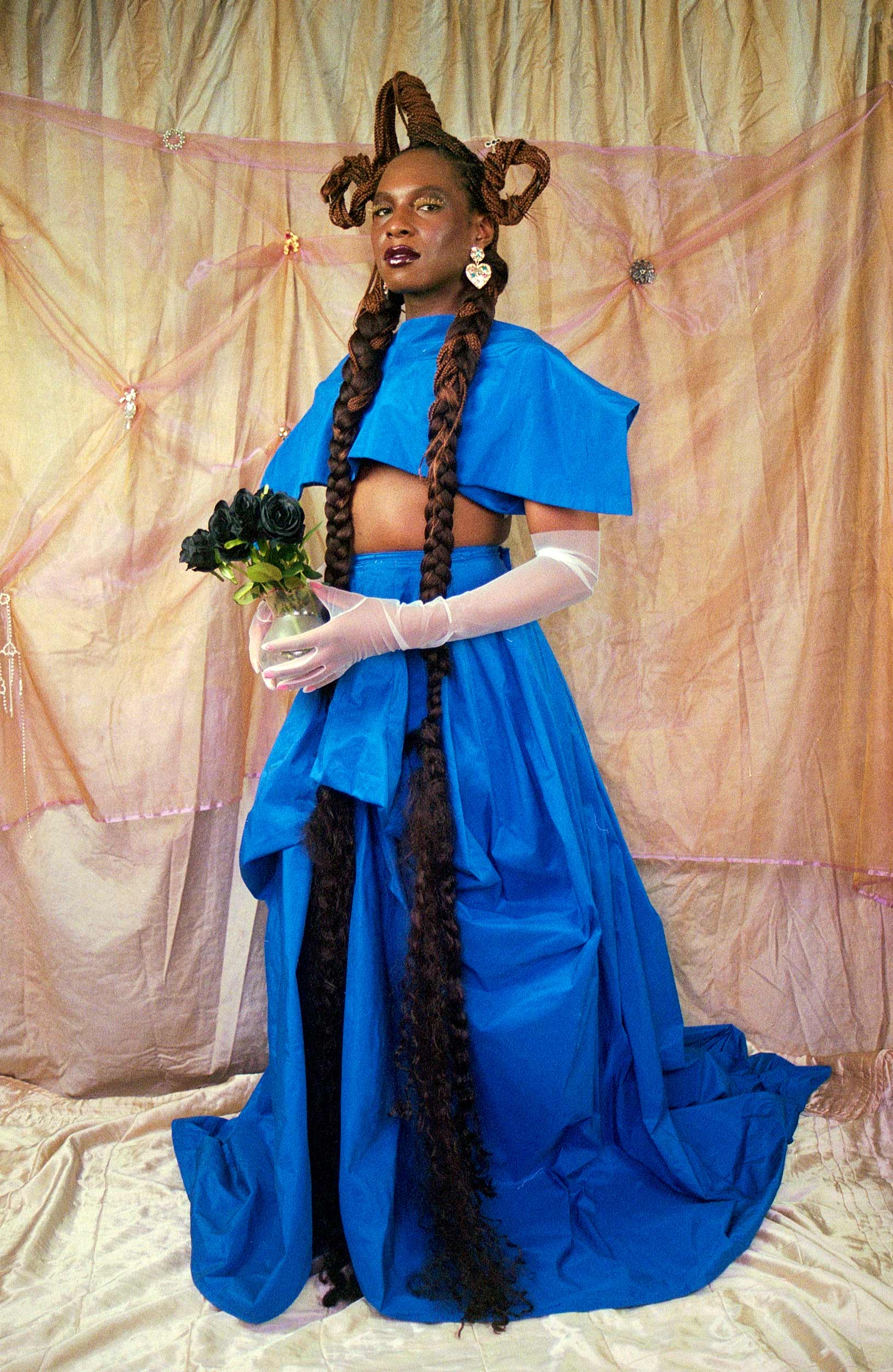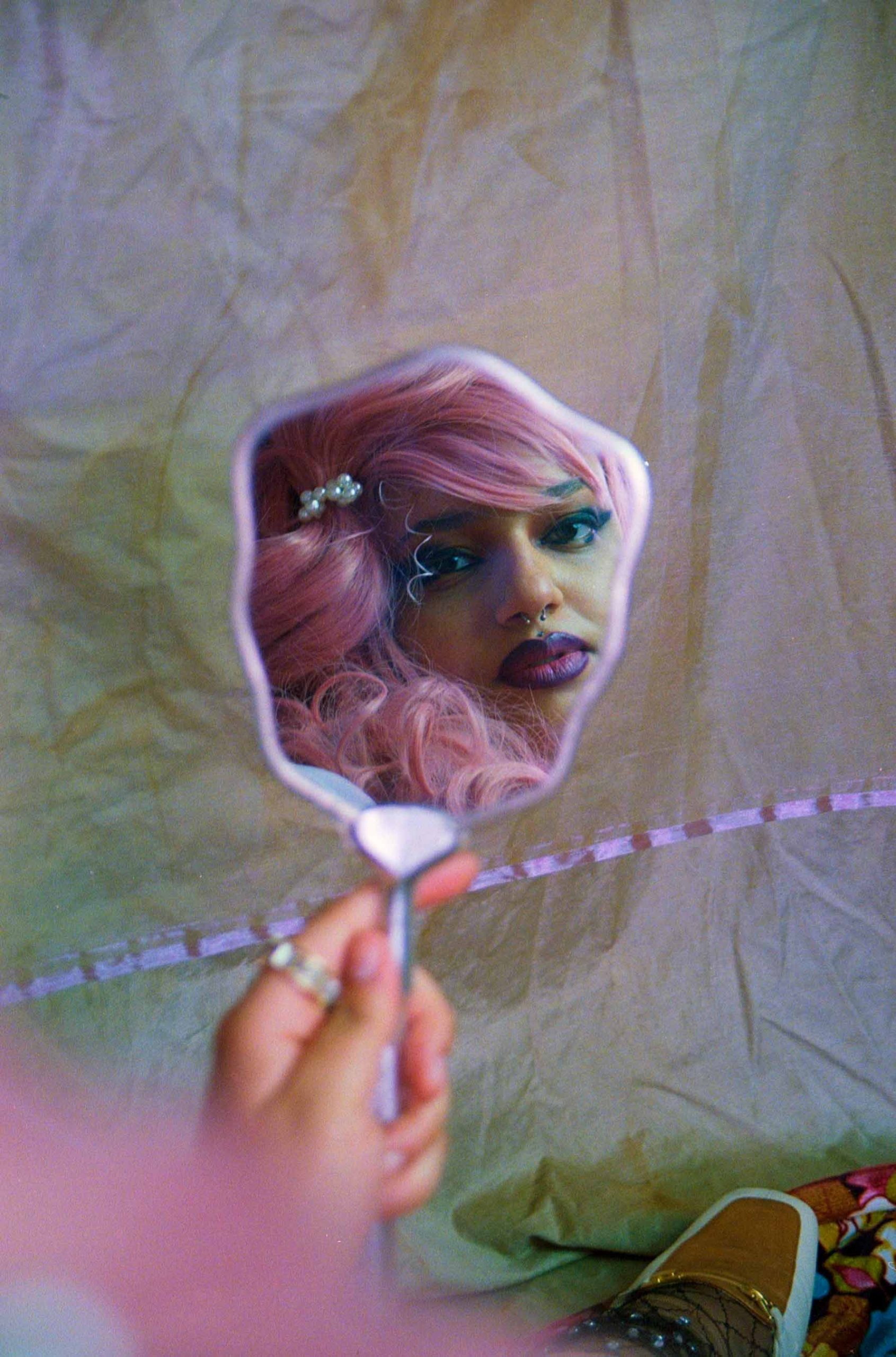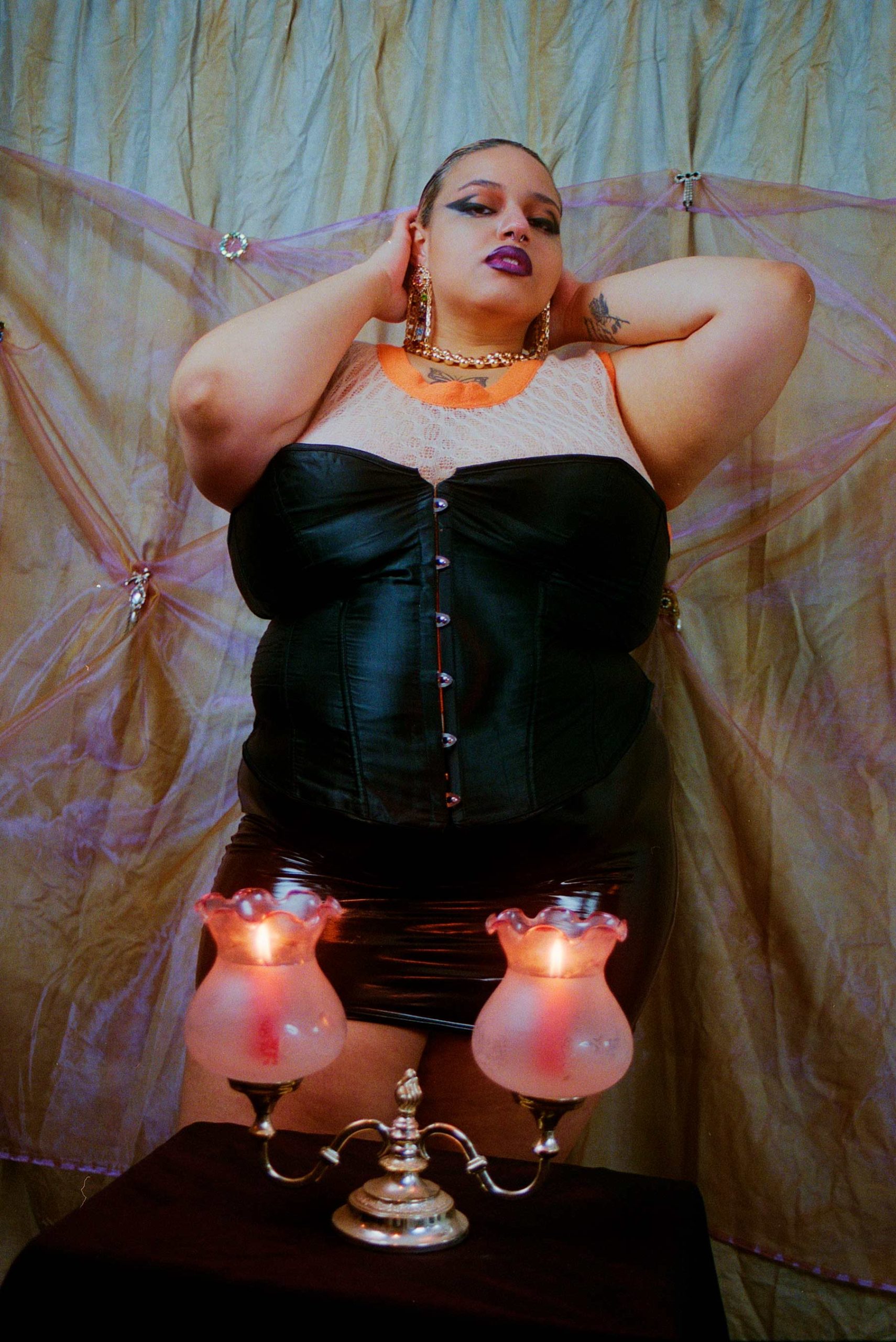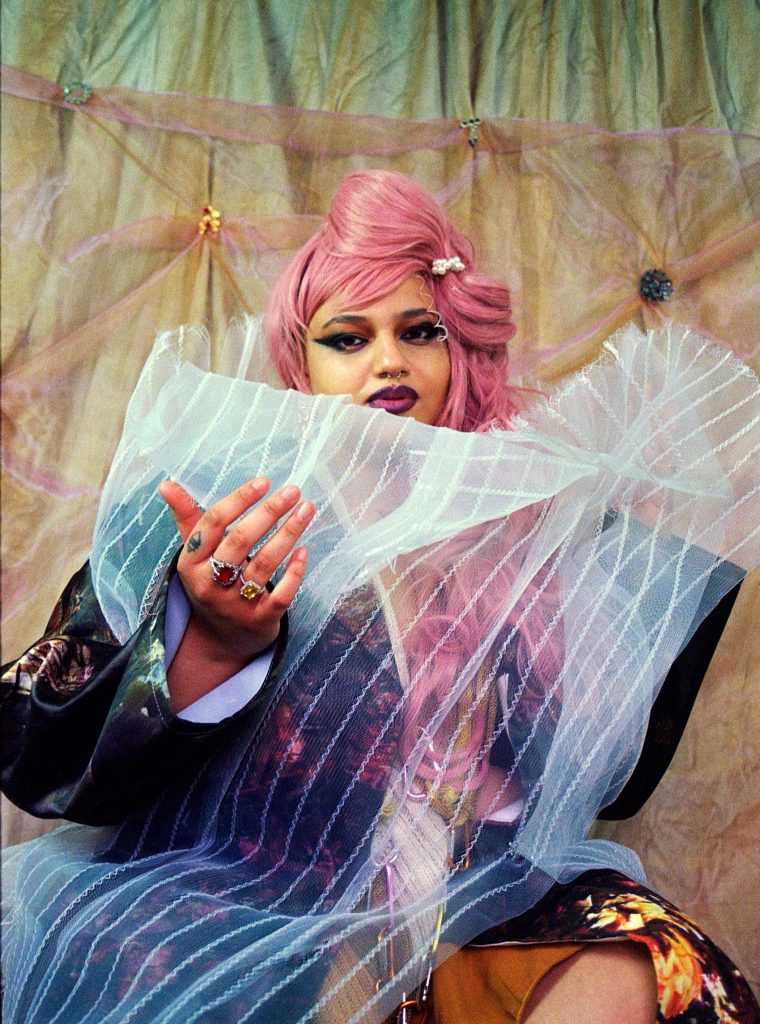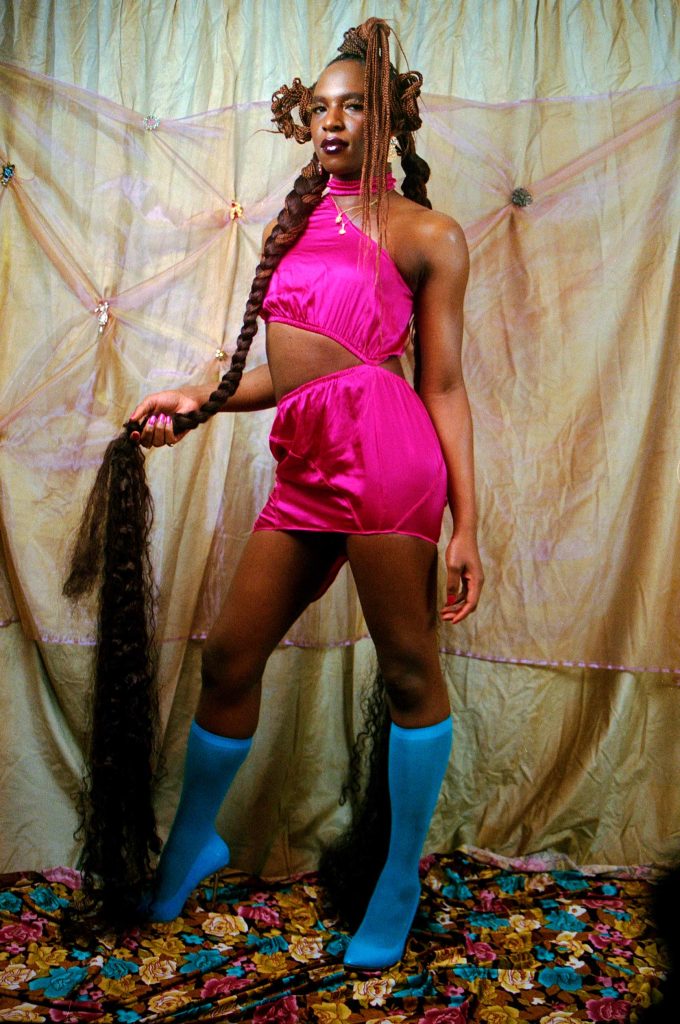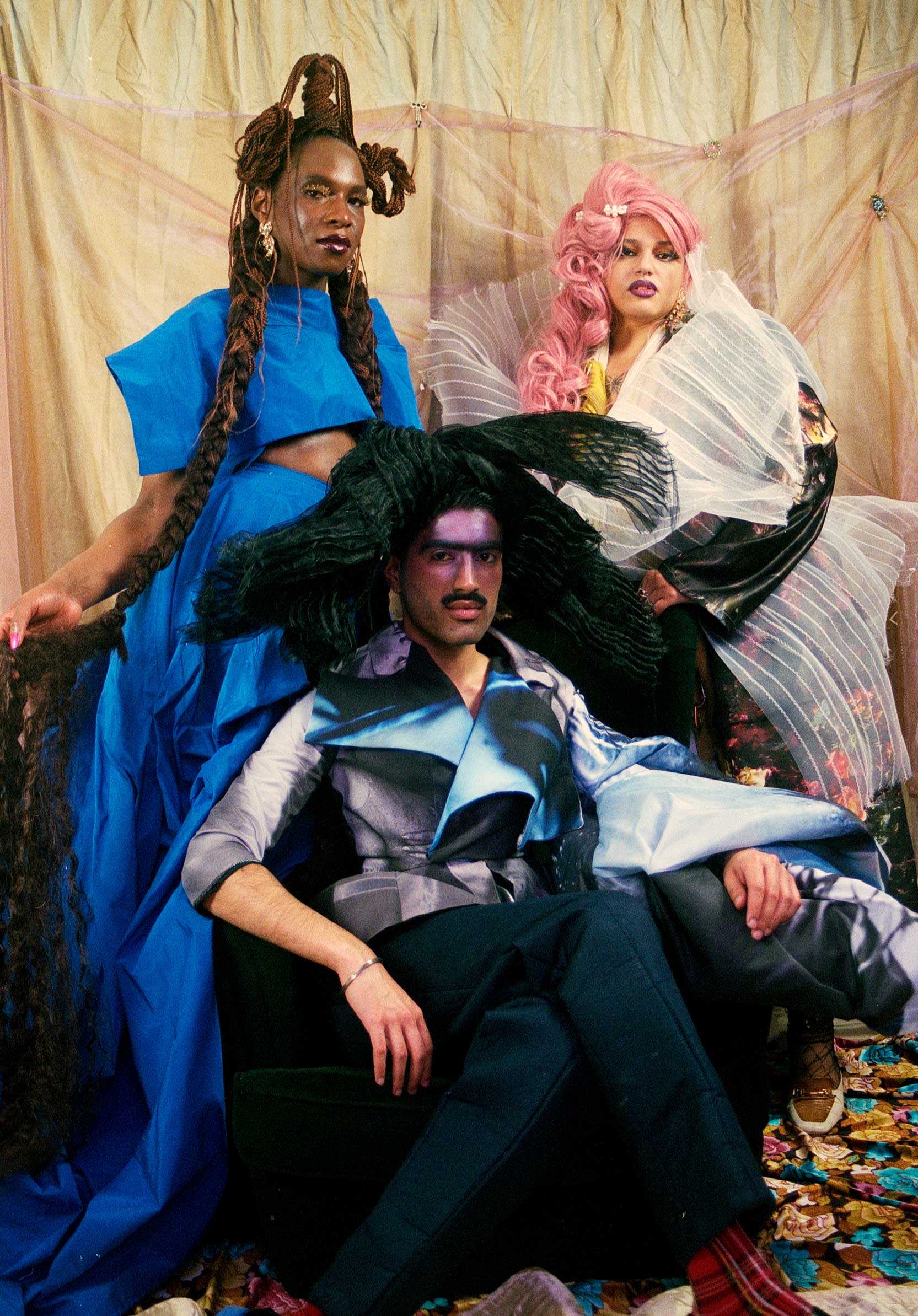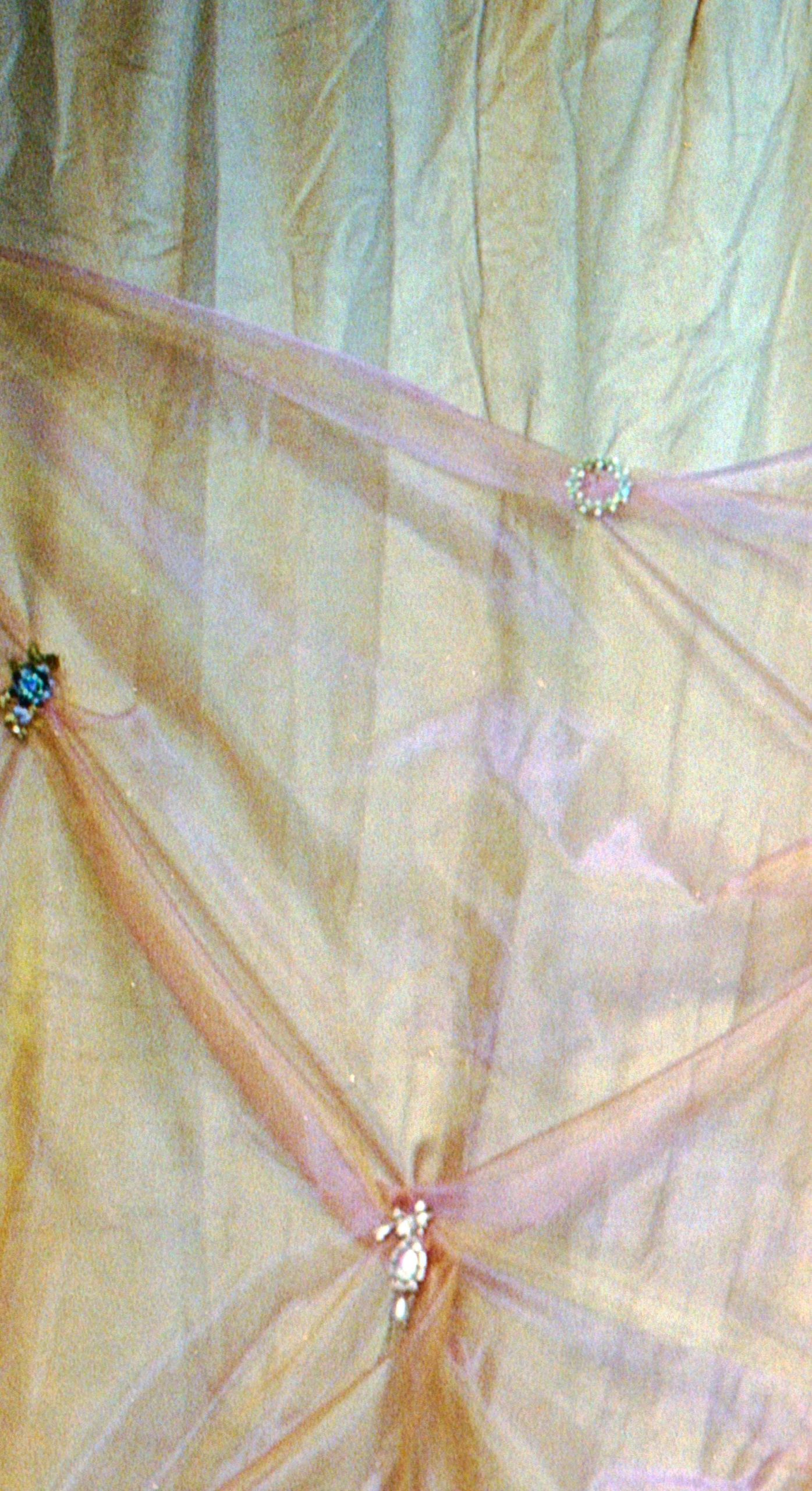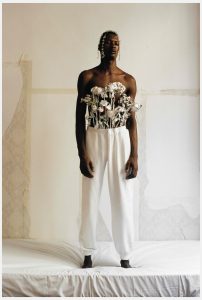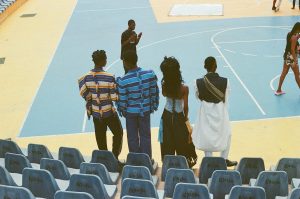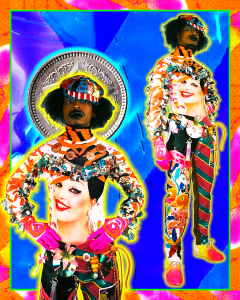fashion editorial with photographer
BERNICE MULENGA
Chloe wears pink cut out dress by Conflict of Ego, shoes and accessories stylist’s own. Zorawar wears marble mohair top by Namita Khade, and front cut trousers by Ella Boucht.
I am not grappling with notions of identity and representation in my art. I am grappling with safety and futurity. . . . I reject the colonial gaze as the primary gaze. I am outside of it in the land of NOPE. — E. Jane, “NOPE (a manifesto)”
To name ourselves rather than be named we must first see ourselves. — Lorraine O’Grady, “Olympia’s Maid: Reclaiming Black Female Subjectivity”
. . . Du Boisian double consciousness that has characterized Black life for centuries has wriggled its way into the minds of all subjects and now every single networked human being exists under this condition of “looking at oneself through the eyes of others” or living, watching, being watched, watching yourself watch others. What could be a workable theory of auto-expression that takes into account the temporally, spatially, experientially flattened act of looking and being looked at? We are each the constant voyeuristic subject and object, both surveilled and surveyor. Devising a theory, politic, praxis (or whatever) that finds its center in the experiences of the Black femme and female body—perhaps historically the blurriest situation one can imagine for a body—might lead us to a theory, politic, praxis (or whatever) that speaks more accurately to the increasingly alienated experiences of all users—in particular those whose gender expressions fall outside of white cis-masculinity. — Aria Dean, “Closing the Loop”
Chloe wears cobalt blue nylon two-piece gown by Maximilian Raynor. Gloves and accessories stylist’s own.
The body needs to do more than simply present itself; it needs to insert itself . . . — Rózsa Farkas, “Whose Bodies 2”
In the light of daytime, I felt trapped, always shifting uneasily under the weight of incessant white heteronormative observation. . . . I commenced to push back against the violence of this unconsented visibility, to take control of the eyes on me and how they interpreted my body. . . . We will always struggle to recognise ourselves if we continue to turn to the normative as central reference point. — Legacy Russell, Glitch Feminism: A Manifesto
The fashion image is an inherently fetishised image of a real thing. — Sequoia Barnes, “‘If You Don’t Bring No Grits, Don’t Come’: Critiquing a Critique of Patrick Kelly, Golliwogs, and Camp as a Technique of Black Queer Expression”
Zorawar wears printed wool jacket with structured sleeve by Maximilian Raynor, and bonded denim structured trousers by Aleksandar Mitrovic.
Whenever you put your body online, in some way you are in conversation with porn. — Ann Hirsh in “Becoming Camwhore, Becoming Pizza”
A body that pushes back at the application of pronouns, or remains indecipherable within binary assignment, is a body that refuses to perform the score. This nonperformance is a glitch. This glitch is a form of refusal. — Legacy Russell, Glitch Feminism: A Manifesto
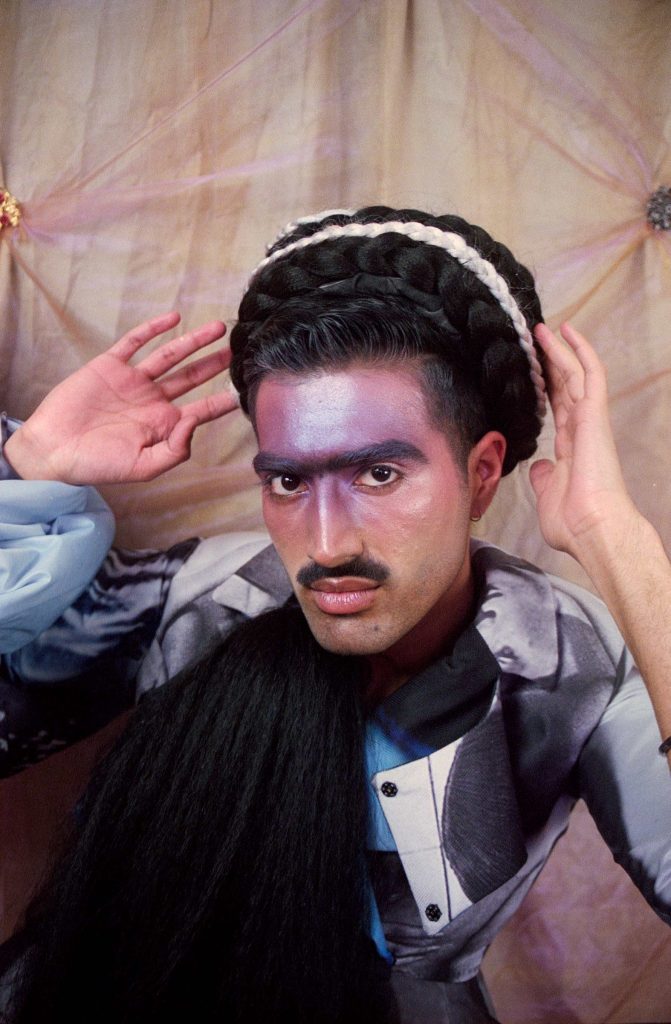
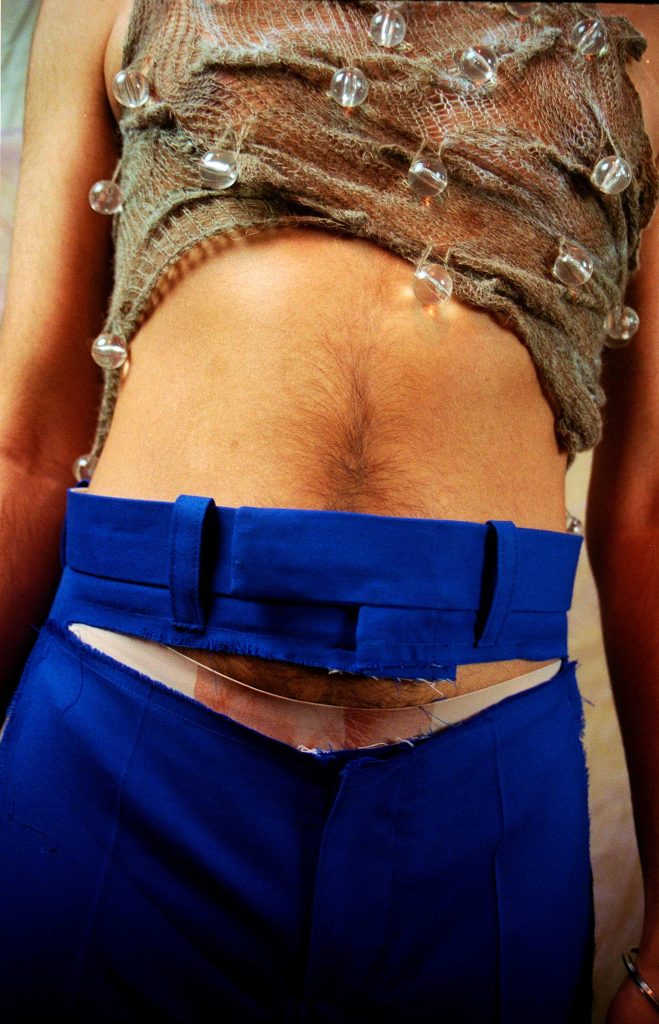
Zorawar wears printed wool jacket with structured sleeve by Maximilian Raynor; marble mohair top by Namita Khade, and front cut trousers by Ella Boucht.
Laurie wears vest by Knit & Ting, corset and skirt models own, accessories stylist’s own.
Queerness is that thing that lets us feel that this world is not enough, that indeed something is missing. — José Esteban Muñoz, Cruising Utopia: The Then and There of Queer Futurity
With each of us ‘invisible men’ we remain responsible for manifesting our own reflections, and through today’s internets we can find ways to hold these mirrors up for one another. — Legacy Russell, Glitch Feminism: A Manifesto
It must be noted that queer people and Black women are often at the forefront of liberation practices, with queer and Black feminist practices and activism being particularly disruptive to the status quo. This may be because we have nothing to lose as we are at the bottom, and know what it feels like there, on the receiving end of multiple oppressions. Black and femme, Black and non-binary, Black and poor, Black and trans, Black and having a disability, Black and dark(er) skinned.
We live today in a society governed by the white, cisgendered, heterosexual male desire. Desire is projected onto the body, particularly the Black body, as an expectation. Then comes the need to know. Are you a boy or a girl? Gay or straight? What do you have between your legs? Any movement outside of the expectation is punished. Even during the shooting of this Fashion Editorial, we suffered phobic comments from passers by on the street.
Chloe wears pink cut out dress by Conflict of Ego, shoes and accessories stylist’s own. Laurie wears hand-made wired tape cocoon with printed floral denim coat and golden silk mini skirt by Maximilian Raynor, and clip tunic top by Namita Khade. Accessories and shoes stylist’s own.
So, how to liberate ourselves from these relentless, oppressive forces? How to explore our own desires outside of white male desire and its limitation to heteronormative standards?
In Katherine McKittrick’s work on Black livingness as methodology, she asks, “What happens to our questions if we insist our methodologies are, in themselves, forms of Black well-being?” So then, in the way we do things—for example, in this shoot with a team made up entirely of Black women and non-binary people, and models that understand what it is to live outside of the “expectation”—we are already liberating and liberated, and holding the mirrors up for one another.
Chloe wears cobalt blue nylon two-piece gown by Maximilian Raynor. Gloves and accessories stylist’s own. Zorawar wears black organza ribbon hat and printed wool jacket with structured sleeve by Maximilian Raynor, bonded denim structured trousers by Aleksandar Mitrovic, socks stylist’s own. Laurie wears hand-made wired tape cocoon with printed floral denim coat and golden silk mini skirt by Maximilian Raynor, and clip tunic top by Namita Khade. Accessories and shoes stylist’s own.
Barnes, Sequoia. “‘If You Don’t Bring No Grits, Don’t Come’: Critiquing a Critique of Patrick Kelly, Golliwogs, and Camp as a Technique of Black Queer Expression.” Open Cultural Studies, vol. 1, no. 1, 2017, pp. 678-689.
Dean, Aria. “Closing the Loop.” The New Inquiry, 1 Mar. 2016, https://thenewinquiry.com/closing-the-loop/.
E. Jane, “NOPE (a manifesto).” e-janestudio, 2015, https://e-janestudio.tumblr.com/post/132335744305/i-am-not-an-identity-artist-just-because-i-am-a.
Farkas, Rózsa Zita. “Whose Bodies 2.” Temporary Art Review, 3 Aug. 2015, https://temporaryartreview.com/whose-bodies-2/.
Hirsch, Ann, et al. “Becoming Camwhore, Becoming Pizza.” Mute, 8 Nov. 2012, https://www.metamute.org/editorial/articles/becoming-camwhore-becoming-pizza.
McKittrick, Katherine. “Dear Science and Other Stories.” Duke UP, 2021.
Muñoz, José Esteban. Cruising Utopia: The Then and There of Queer Futurity. NYU Press, 2009.
O’Grady, Lorraine. “Olympia’s Maid: Reclaiming Black Female Subjectivity.” Art, Activism, and Oppositionality, edited by Grant H. Kester, Duke UP, 1998, pp. 268-287.
Russell, Legacy. Glitch Feminism: A Manifesto. Verso, 2020.
RASHIDA TAYLOR fashion editor
Rashida Taylor is Fashion Editor of Stillpoint Magazine, a writer, and stylist based in London, encouraged by artistic expressions of the Black experience in all its various forms.
BERNICE MULENGA photographer & set designer
Bernice Mulenga is a London based multidisciplinary artist, who prioritizes the use of analog processes in their work.
Mulenga’s work centers their community and the experiences within it—most notably in their ongoing photo series #friendsonfilm. They are also known for their set design, both in their own projects and in collaborative projects with others.
Mulenga’s work also explores reoccurring themes surrounding their identity, sexuality, grief, race, family, and Congolese culture.
© Copyright for all texts published in Stillpoint Magazine are held by the authors thereof, and for all visual artworks by the visual artists thereof, effective from the year of publication. Stillpoint Magazine holds copyright to all additional images, branding, design and supplementary texts across stillpointmag.org as well as in additional social media profiles, digital platforms and print materials. All rights reserved.
